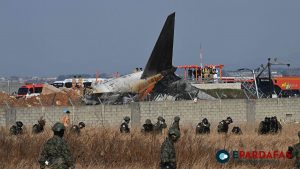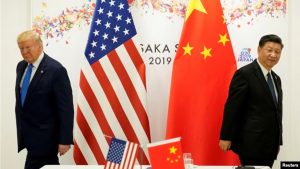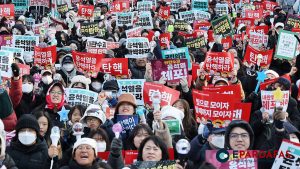
China Faces Uncertain 2025 Amid Domestic and Global Challenges
China begins 2025 under a cloud of uncertainty following a challenging 2024 marked by a sluggish economic recovery and rising social unrest. Observers suggest that both domestic and international headwinds will dominate the year ahead. Here are the critical trends likely to shape China in 2025:
Xi Jinping’s Regime Faces Stability Amid Internal Struggles
President Xi Jinping is expected to remain firmly in power, with his third term extending through 2028. However, internal power struggles within the Chinese Communist Party (CCP) persist.
Observers note Xi’s anti-corruption campaign may intensify, targeting political opponents and vested interests. While consolidating power, these moves risk provoking backlash within the party, adding to the complexities of governance in an opaque political system.
U.S.-China Relations on Shaky Ground
Relations between the U.S. and China face new challenges with Donald Trump’s return to the presidency. Analysts suggest that while initial negotiations between Trump and Xi Jinping could provide a brief “honeymoon period,” trade tensions, technology disputes, and geopolitical rivalry may escalate later in the year.
Uncertainty surrounds the impact of Trump’s unpredictable diplomacy and the potential actions of his hawkish administration. Experts caution that 2025 could see increased volatility in bilateral relations.
Economic Struggles and the Search for Growth
China’s economy is grappling with structural weaknesses, deflation, and mounting local government debt. Observers believe Beijing’s efforts to stimulate growth—such as the 10 trillion yuan debt plan—have yet to yield significant results.
Economic growth forecasts for 2025 are modest, with analysts predicting a target between 4% and 5%. However, weak consumer spending and systemic fiscal issues could undermine efforts to boost domestic demand.
Rising Military Factionalism
The Chinese military faces significant internal tensions following the ousting of high-ranking officials in corruption probes. Speculation about infighting within the People’s Liberation Army (PLA) raises questions about the stability of Xi Jinping’s control over the armed forces.
Some analysts see these developments as a sign of Xi’s diminishing grip on military power, while others argue they reflect his ongoing efforts to consolidate authority.
Taiwan Tensions Likely to Escalate
International experts warn of potential crises in the Taiwan Strait in 2025. While the PLA is expected to continue gray-zone tactics, including military exercises and incursions, a full-scale invasion is deemed unlikely due to China’s internal challenges and the unpredictable stance of the Trump administration.
Rising Social Unrest Amid Economic Strain
Protests across China surged in 2024, with demands largely driven by economic grievances such as wage disputes and unfinished construction projects. Analysts predict similar or increased unrest in 2025, fueled by continued economic instability.
China’s restrictive political environment leaves citizens with few avenues for redress, heightening the risk of extreme acts of dissent and “loyalty-driven” violent incidents.
Bleak Outlook for Human Rights
Observers anticipate worsening conditions for human rights in 2025, with tighter restrictions on free speech and assembly. The CCP is likely to intensify its efforts to suppress dissent and maintain social control in the face of economic challenges.
China’s trajectory in 2025 will be shaped by its ability to navigate domestic economic reforms, manage internal power struggles, and address growing public discontent. At the same time, its geopolitical relations, particularly with the United States, will remain fraught with challenges. As Beijing confronts these multifaceted issues, the year ahead promises to test the resilience of Xi Jinping’s leadership and China’s broader governance model.
Agency













Comments